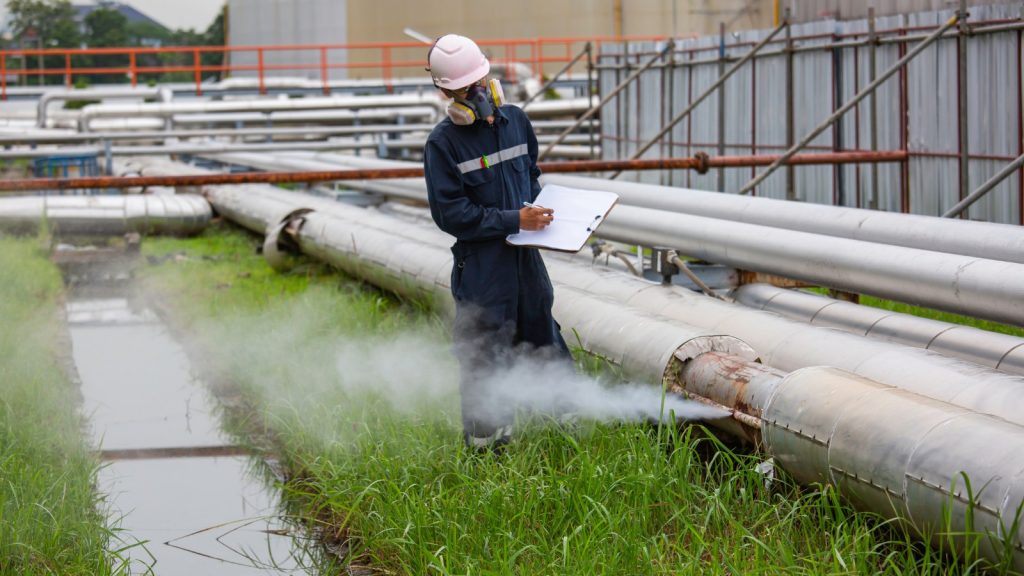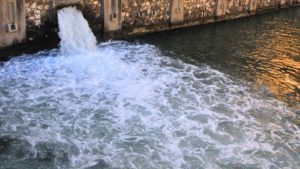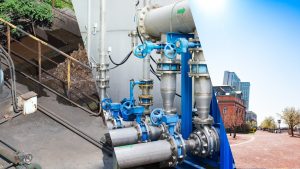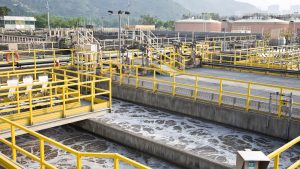We know how important the functioning of pump assets is when it comes to the water treatment realm in Australia. The pumps are one major factor that can decide whether your water treatment plant operates smoothly or not. This is why you need to ensure you have implemented the best pump design for your pump assets.
In this article, we will look into the function of the pump in the water industry in Australia and the importance of having a suitable design for your pump assets to get the optimal outcome in this competitive water treatment industry.
In this article, we will look into the function of the pump in the water industry in Australia and the importance of having a suitable design for your pump assets to get the optimal outcome in this competitive water treatment industry.
We will look into
- What is the Function of Pump in Water Treatment?
- The Importance of Pump Design for Water Treatment Infrastructure
- Ensuring Efficient Water Movement
- Enhanced Reliability
- Optimised Pump Performance
- Making Maintenance Easier
- Ensure the Pump Longevity
3. Ensuring the Pump Design’s Suitability through Modern Tools
What is the Function of Pump in Water Treatment?

- First, we need to understand why you have pump assets in water treatment facilities. Pumps are not just another asset in this arena, as they play a significant role in water treatment by facilitating the movement of water through various stages of the treatment process. You can call it the ‘heart’ of the water treatment plant, as it acts as a main element of the infrastructure for sure.
- These pump assets are empowered to ensure an efficient and continuous flow, which is quite essential for the filtration, purification, and distribution of water throughout its overall operational workflow.
- The power of it is not limited to the above-mentioned aspects. Then what else can it offer you? Did you know that they regulate pressure? Yes, it can also maintain desired flow rates and transfer water between treatment stages, optimising the removal of impurities and contaminants. When you have implemented a reliable pump asset, it has the ability to minimise downtime, which ensures uninterrupted operations critical for meeting water quality standards and demand.
- On the other hand, you require pump assets for the water treatment process, as their design and maintenance directly impact efficiency, cost-effectiveness, and system longevity.Another benefit of pump assets is that they help safeguard public health as they support the effective treatment and distribution of clean, potable water to communities in Australia.
The Importance of Pump Design for Water Treatment Infrastructure

Ensuring Efficient Water Movement
Efficient water movement within water treatment infrastructure is highly required for ensuring effective purification and distribution, as a good pump design stands as a significant point in achieving this efficiency.
Let us explain this deeply. Well-designed pumps provide quick and accurate movement, which is quite essential to filtration and treatment operations. They can also help optimise flow rates, preserve sufficient pressure, and efficiently move water through treatment stages. They maximise output while minimising energy use and operating expenses.
A carefully designed pump system also reduces inefficiencies by avoiding jams or barriers that could block water flow. This barrier-free movement is important for meeting water demands while maintaining consistent water quality and adhering to regulatory standards.What we can witness is that a robust pump design has the capacity to ensure the swift and reliable transportation of water within the treatment infrastructure, and it can also ensure the effectiveness of delivering clean and safe water to the general public.
Let us explain this deeply. Well-designed pumps provide quick and accurate movement, which is quite essential to filtration and treatment operations. They can also help optimise flow rates, preserve sufficient pressure, and efficiently move water through treatment stages. They maximise output while minimising energy use and operating expenses.
A carefully designed pump system also reduces inefficiencies by avoiding jams or barriers that could block water flow. This barrier-free movement is important for meeting water demands while maintaining consistent water quality and adhering to regulatory standards.What we can witness is that a robust pump design has the capacity to ensure the swift and reliable transportation of water within the treatment infrastructure, and it can also ensure the effectiveness of delivering clean and safe water to the general public.
Enhanced Reliability
A comprehensive pump system is the basis of any water treatment facility’s dependability. It acts as an accelerator for reliable and continuous operations while reducing downtime and ensuring ongoing water treatment procedures. Maintaining strict public health standards and supplying clean water to the ever-increasing demand is 100% achievable with this dependability.
As it helps to efficiently move water through various treatment stages, these pumps reduce the likelihood of breakdowns, which prevent disruptions that could compromise water quality.
The best thing about this is that the smooth operation of a properly built pump system enhances trustworthiness in the first place, ensuring a constant flow that is essential for meeting community demands. In the end, it provides protection against possible errors in the water treatment process, so the public has a consistent source of clean, safe water. With a suitable design in place, your operations will not be interrupted, for sure.
As it helps to efficiently move water through various treatment stages, these pumps reduce the likelihood of breakdowns, which prevent disruptions that could compromise water quality.
The best thing about this is that the smooth operation of a properly built pump system enhances trustworthiness in the first place, ensuring a constant flow that is essential for meeting community demands. In the end, it provides protection against possible errors in the water treatment process, so the public has a consistent source of clean, safe water. With a suitable design in place, your operations will not be interrupted, for sure.
Optimised Pump Performance
Another benefit of having a well-planned pump design in your water treatment operations is that optimisation of pump performance within the water treatment infrastructure depends on this exclusively crafted design.
As observed by the experts, this design highly influences the treatment process by directly impacting critical factors such as flow rate, pressure regulation, and the efficient handling of various contaminants or pollutants. An outstanding pump system ensures an ideal flow rate, allowing water to move flawlessly through certain treatment stages. Plus, it can help with the removal of impurities as well. It keeps the necessary pressure levels in place, which are essential for efficient filtration and disinfection procedures.
Also, the design’s flexibility in managing various pollutants ensures thorough purification, raising water quality to 200%.A faultless pump system also takes into consideration the minor distinctions between different contaminants, which ultimately allows effective treatment strategies that are specifically customised for particular materials. In the end, this enhanced pump performance raises the effectiveness of the treatment process and ensures the delivery of safe, high-quality water to communities while helping to keep up with the strict health and safety regulations in Australia.
As observed by the experts, this design highly influences the treatment process by directly impacting critical factors such as flow rate, pressure regulation, and the efficient handling of various contaminants or pollutants. An outstanding pump system ensures an ideal flow rate, allowing water to move flawlessly through certain treatment stages. Plus, it can help with the removal of impurities as well. It keeps the necessary pressure levels in place, which are essential for efficient filtration and disinfection procedures.
Also, the design’s flexibility in managing various pollutants ensures thorough purification, raising water quality to 200%.A faultless pump system also takes into consideration the minor distinctions between different contaminants, which ultimately allows effective treatment strategies that are specifically customised for particular materials. In the end, this enhanced pump performance raises the effectiveness of the treatment process and ensures the delivery of safe, high-quality water to communities while helping to keep up with the strict health and safety regulations in Australia.
Making Maintenance Easier
If you still wonder why you need a suitable pump design within the water treatment infrastructure, then you should think of the maintenance of the infrastructure. The suitable design significantly makes it easier to do maintenance, which contributes to the system’s overall efficiency and longevity.
A well-designed pump system includes components that make usual maintenance and repairs easier. That means if you decide to opt for a complex pump design, you will probably be in trouble.If further explained, how this occurs, this accessibility to key components, strategic placement of parts, and user-friendly mechanisms clear the blockages to the maintenance tasks inside the water treatment facility.
Plus, a design that puts durability and resilience first minimises the need for significant repairs by reducing the frequency of failures.Another thing is that a well-designed pump system usually includes predictive maintenance features coupled with sensors or monitoring systems that detect potential issues before they become burdens. With this benefit in hand, simplified maintenance not only reduces operational downtime but also optimises the lifespan of the equipment, which leads to cost savings and maximises ROI.
A well-designed pump system includes components that make usual maintenance and repairs easier. That means if you decide to opt for a complex pump design, you will probably be in trouble.If further explained, how this occurs, this accessibility to key components, strategic placement of parts, and user-friendly mechanisms clear the blockages to the maintenance tasks inside the water treatment facility.
Plus, a design that puts durability and resilience first minimises the need for significant repairs by reducing the frequency of failures.Another thing is that a well-designed pump system usually includes predictive maintenance features coupled with sensors or monitoring systems that detect potential issues before they become burdens. With this benefit in hand, simplified maintenance not only reduces operational downtime but also optimises the lifespan of the equipment, which leads to cost savings and maximises ROI.
Ensure the Pump Longevity
When incorporating a fusion of durable materials, precise construction, and efficient operational mechanisms, a pump system undoubtedly minimises wear and tear by 50%.Pump lifespan is increased when optimal performance is combined with less stress on pump components.
Also, the design includes strategic maintenance considerations to prevent premature deterioration and increase longevity. The best outcome is that when the longevity goes up, there will be fewer requirements for maintenance in your water treatment plant.You must have spent a lot of money on your pumps, for sure. When you can increase its service life, you will have the ability to receive the maximum ROI throughout the expected life cycle of the pump infrastructure.
Also, the design includes strategic maintenance considerations to prevent premature deterioration and increase longevity. The best outcome is that when the longevity goes up, there will be fewer requirements for maintenance in your water treatment plant.You must have spent a lot of money on your pumps, for sure. When you can increase its service life, you will have the ability to receive the maximum ROI throughout the expected life cycle of the pump infrastructure.
Ensuring the Pump Design’s Suitability through Modern Tools

Although you have understood the importance of a properly planned pump design, you may not have a clear idea of how to implement a suitable design customised to your requirements. This is where you need the help of a cutting-edge ‘Pump Asset Solution’ that can provide any service from planning, analysing, and screening to implementing your pump infrastructure. However, selecting a suitable supplier is the key to success, for sure.







